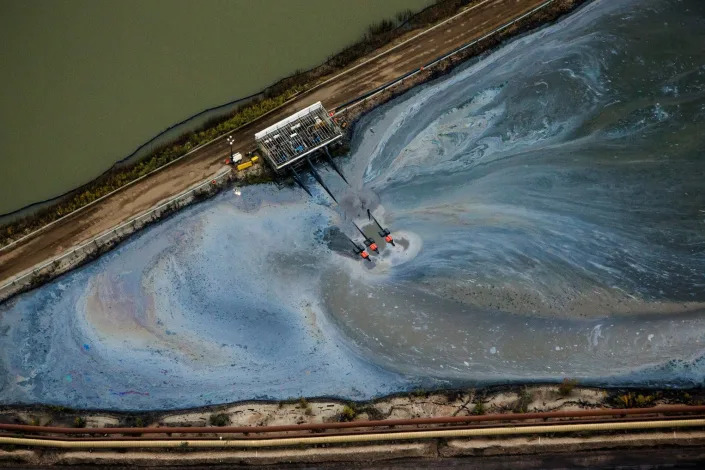
Nicole Goodkind
Wed, January 26, 2022
Container shipping companies have had a banner year, collecting profits that industry experts call "surreal," at the same time as it's seeing a labor shortage caused by unhappy and underpaid workers. That threatens to further weaken the already precarious global supply chain—and throw those record profits into peril.
The solution appears to be lots of bonuses for the workers they do have.
Prices on consumer goods have surged to 39-year highs amid the supply chain crisis that has kept many store shelves barren and kept industry in the U.S. from achieving efficient productivity levels. But shipping container companies aren’t feeling that burden, at least when it comes to their bank accounts.
Container shipping pre-tax profit for 2021 and 2022 could be as high as $300 billion, according to Drewry, an independent maritime research consultancy, while the industry forecast for 2021 was a record-breaking $150 billion. In 2020, the industry brought in $25.4 billion, according to The Journal of Commerce. Drewry expects the industry to shoot even higher in 2022.
Some of these gains are going back to workers. Shipping lines are paying workers huge year-end bonuses, often worth three years’ of salary or more.
The world’s largest shipping lines are worried about their ability to maintain and recruit labor as jobs in the industry tend to have low pay and bad working conditions. Employees on cargo ships, known as seafarers, are isolated at sea for months, often with 15-hour work days. Labor violations are common and because there’s been difficulty getting COVID-19 vaccines to seafarers, they’re often denied entries at ports and must remain on boat, even if they are docked. A recent survey by the Standard Club found that seafarers’ happiness reached new lows in 2021.
“We heard from many seafarers, particularly those aged 35 and over, that they were not intending to return to sea once they eventually got home,” the report said. “There is likely to be a growing shortfall in seafarers in the coming years.”
The harsh conditions for seafarers, exacerbated by COVID-19, led the International Chamber of Shipping, the principal international trade association for the shipping industry, to beg governments to alleviate some of their woes.
“The impact of nearly two years’ worth of strain, placed particularly upon maritime and road transport workers, but also impacting air crews, is now being seen. Their continued mistreatment is adding pressure on an already crumbling global supply chain,” transport heads wrote in a joint open letter to world leaders. “It is of great concern that we are also seeing shortages of workers and expect more to leave our industries as a result of the poor treatment they have faced during the pandemic, putting the supply chain under greater threat.”
In the meantime, the world’s largest shipping companies are attempting to mitigate job loss by passing on some of their pandemic profits to their workers through huge one-time bonuses.
Maersk gave all of its 80,000 employees a bonus of $1,000, CMA CGM, the French shipping company, awarded bonuses equivalent to eight weeks' pay. The South Korean HMM gave workers a 7.9% raise and a bonus worth nearly six months’ pay.
Chinese shipping companies went even more extreme in their bonuses. China’s state-owned giant Cosco Shipping Holdings Co. gave out as much as 30 times their workers’ monthly salary, according to Caixin Global. Cosco’s earnings grew by 1651% to $10.7 billion in the first three quarters of 2021.
Some workers at Taiwan’s Evergreen Marine Corp. received a year-end bonus that was nearly 40 times their monthly salary. Workers at Wan Hai, another Taiwanese shipping line, got annual bonuses equivalent to a full year’s wages plus an additional $36,079.
Ironically, the boom in profits being passed onto workers who are dismayed by COVID-related issues come from COVID-19 supply chain woes.
Those eye-popping numbers might be because container companies like Maersk are taking advantage of strong demand in ports, and raising freight prices to new highs.
As ports and terminals experience delays due to the breakdown in the supply chain, they have essentially become parking lots for ships and boxes, allowing container and shipping line companies to continue to charge fees as they wait. Soaring demand for containers and shipment, meanwhile, has led to rapid and drastic fee increases.
“To seasoned observers of the container market, typing these numbers on a page is frankly surreal” Drewry wrote in its Container Insight Weekly analysis on the industry.
This story was originally featured on Fortune.com





